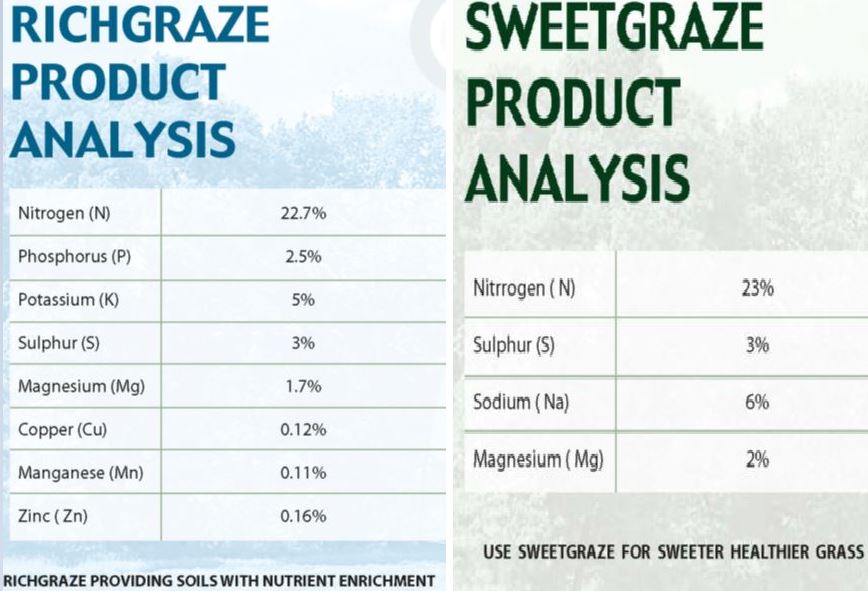By Gavin McGowan, technical sales manager with Target Fertilisers
With margins so tight in the tillage sector – and the emphasis on grass production heightened for dairy and beef enterprises – it is important for farmers to adhere to regular soil testing.
Farmers need to sit down with their advisor and develop a good fertiliser programme for the coming season. Soil sampling is the best investment that can be made; it’s critical to spend some money on a few comprehensive soil samples – across the farm – to see what is happening beneath the surface.
Comprehensive soil test results will expose underlying issues for a small expense. For example, high chlorine, magnesium or molybdenum soils each require different recipes of fertiliser compounds to resolve.
Getting the basics right
Getting the basics right is the most important aspect of soil fertility and moving pH to its adequate level is the most important step in this process.
Recent national statistics show that 64% of soils under grass are under a pH of 6.3, while 55% of tillage soils are under a pH of 6.5.
Soil lime status must be corrected to get optimum value from other nutrient use. I suggest we need an annual lime application of over one million tonnes to make inroads into soil acidity.
It’s important to keep in mind that very basic soil tests show nitrogen (N), phosphorous (P), potassium (K) and pH values.
However, it is quite more comprehensive than that. Soil labs in Ireland have definitely improved in recent years; but there are some that still don’t give information such as cation exchange capacity (CEC), calcium (Ca) and magnesium (Mg) levels or ratios.
This is crucially important, as some farmers are not aware that there are two different types of quarry ground lime available – high calcium lime or magnesium lime.
This information on your soil test is very important, as it indicates what type of lime suits a specific farm or area. Some areas – in different parts of the country – are high in magnesium and only calcium lime can be used, while others are high in calcium and require magnesium lime.
Where pH is already at adequate levels, products with zero neutralising values (they don’t shift pH) – such as calcium sulphate or Kieserite – can be used to correct the Ca:Mg ratio within the soil.
The best solutions
Target Fertilisers is working with merchants and co-ops to provide the best possible solutions for problems at farm level through the provision of advice and a full array of products.
However, this has to start with soil sampling to ensure that a fertiliser programme is completed to suit specific farms, while also having a minimal impact on the environment.
Great work was recently completed by K+S KALI, Teagasc and the Fertiliser Association of Ireland, where they brought out a ‘nutrient wheel’ so farmers and advisors can now match their fertiliser requirement with the previous season’s off-takes.
Recent figures released by Teagasc show that there are now 120,000 soil samples taken annually and the present status of soils is outlined in the below table.
Fertiliser use and deficiencies
In 2017, 80% of fertiliser use consisted of six products, including: 10-10-20; 18-6-12; 27-2.5-5; 24-2.5-10; CAN (calcium ammonium nitrate); and urea.
Across our customer base, we’ve seen more demand for high-potash fertiliser blends for tillage and grassland silage. Blends such as 10-5-25+S, 12-8-20+S, and 9-9-26 are being used as a result of high yields and poor soil fertility.
Phosphorous and potassium deficiencies are the underlying issues on many farms across the country and usually the symptoms are growth related – whether it’s in a grass or tillage situation.
Over half of the tillage and grassland acreage in Ireland is either index 1 or 2 for P and K; this is worrying and needs to be addressed if farming is to remain sustainable.
Potassium deficiencies have been evident across the country; especially in tillage fields, where reports of brackeling (straw breakdown) have become more abundant.
Farmers must understand the law of diminishing returns; where there is not sufficient potassium available for the plant, nitrogen will also be used inefficiently.
Where nitrogen does not increase yield due to a lack of potassium, the nitrogen remains in the soil after harvest as nitrate and will be more prone to leaching.
Farmers must supply adequate amounts of potassium and it must be readily available in the soil for plant uptake to maintain efficient photosynthesis.
Potassium is considered the second most important major nutrient for plants. It plays a major role in the uptake of water and circulation through the plant’s roots.
Farmers should know that the first symptom of deficiency is chlorosis, which can be very visual in a field – often showing as yellowing in the margins of the leaf of scorching.
It is very apparent in winter cereals; leaves turn yellow, then brown and eventually fall off one by one as they reach the peak growing season.
Solutions to the problem
Target Fertilisers carries out R&D on new products and straights at farm level. Once proven results are obtained, the new fertiliser products are provided to our end users to solve fertility issues.
We have all the mainstream products available too for grassland, including: SeliniXtra; Selinigraze; Sweetgraze; and Richgraze.
We also launched a new product for pulses – such as beans and peas – last year called Pulsextra (0-9-18, with 6% calcium and 4% sulphur).
More information
For more information on the fertiliser straights and compounds offered, contact Target Fertilisers at: 053-9255389 or email at: [email protected]. Click here for more information





